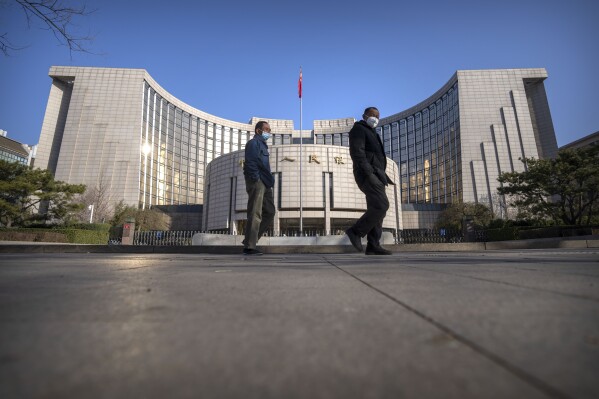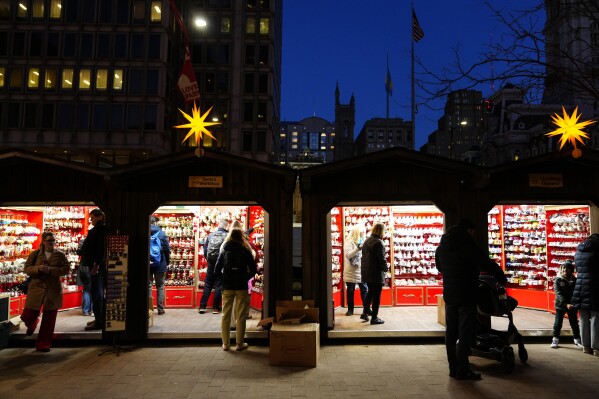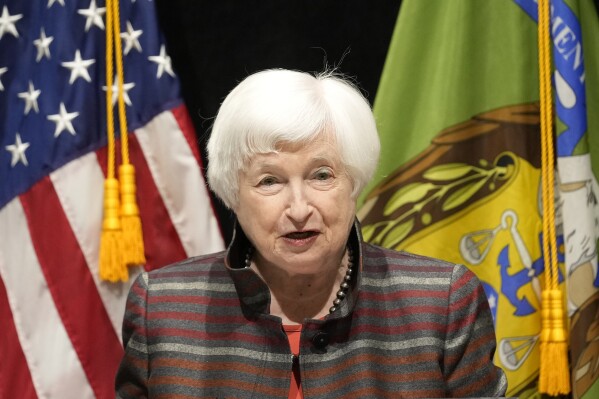US growth likely slowed last quarter but still pointed to a resilient economy
WASHINGTON (AP) — The nation’s economy was supposed to have sunk into recession by now, dragged down by the highest interest rates in two decades and a resulting slump in borrowing and spending.
Instead, the U.S. economy has kept chugging along. Even more encouraging, inflation, which touched a four-decade high in 2022, has edged steadily lower without the painful layoffs that most economists had thought would be necessary to slow the acceleration of prices.
On Thursday, the Commerce Department is expected to report that the nation’s gross domestic product — the economy’s total output of goods and services — rose at an annual rate of around 2% from October through December.
That would mark a deceleration from a vigorous 4.9% growth rate in the July-September quarter. But it would still showcase the surprising durability of the world’s largest economy, marking the sixth straight quarter in which GDP has expanded at a solid annual pace of 2% or more. Helping fuel that growth has been steady spending by consumers, whose purchases drive more than two-thirds of the economy.



The economy’s outlook had looked far bleaker a year ago. As recently as April 2023, an economic model published by the Conference Board, a business group, had pegged the likelihood of a U.S. recession over the next 12 months at close to 99%. The widespread fear was that the Federal Reserve’s numerous interest hikes, in seeking to tame inflation, would slow borrowing and spending so much as to trigger a deep downturn. That is what typically has occurred when the nation’s central bank has aggressively jacked up rates to fight inflation.
Now, there’s growing optimism that the Fed is on track to deliver a rare “soft landing” — raising borrowing rates enough to cool growth and hiring and ease price increases yet not so much as to send the economy into a tailspin. A moderation in GDP growth last quarter would be consistent with that outlook.
Even as inflation has slowed significantly, overall prices remain nearly 17% above where they were before the pandemic erupted three years ago, which has frustrated many Americans. That fact will likely raise a pivotal question for the nation’s voters, many of whom are still feeling the lingering financial and psychological effects of the worst bout of inflation in four decades. Which will carry more weight in the presidential election: The sharp drop in inflation or the fact that most prices are much higher than they were three years ago?
The Fed began raising its benchmark rate in March 2022 in response to the resurgence in inflation that accompanied the economy’s recovery from the pandemic recession. By the time its hikes ended in July last year, the central bank had raised its influential rate from near zero to roughly 5.4%, the highest level since 2001.
As the Fed’s rate hikes worked their way through the economy, year-over-year inflation slowed from 9.1% in June 2022, the fastest rate in four decades, to 3.4% as of last month. That marked a striking improvement but still leaves inflation above the Fed’s 2% target.
The progress so far has come at surprisingly little economic cost. Employers have added a healthy 225,000 jobs a month over the past year. And unemployment has remained below 4% for 23 straight months, the longest such streak since the 1960s.
The once red-hot job market has cooled somewhat, easing pressure on companies to raise pay to keep or attract employees and then pass on their higher labor costs to their customers through price hikes. It’s happened in perhaps the least painful way: Employers are generally posting fewer job openings rather than laying off workers. That is partly because many companies are reluctant to risk losing workers after having been caught flat-footed when the economy roared back from the brief but brutal 2020 pandemic recession.
Another reason for the economy’s sturdiness is that consumers emerged from the pandemic in surprisingly good financial shape, partly because tens of millions of households had received government stimulus checks. As a result, many consumers have managed to keep spending even in the face of rising prices and high interest rates.
Some economists have suggested that the economy will slow in the coming months as pandemic savings are exhausted, credit card use nears its limits and higher borrowing rates curtail spending. Still, the government reported last week that consumers stepped up their spending at retailers in December, an upbeat end to the holiday shopping season.
Joe Brusuelas, chief economist at the tax and consulting firm RSM, said he thinks consumer spending is even stronger than the retail sales report indicated. Brusuelas suggested that the government data “did not adequately capture’’ increased holiday splurging on travel and other services.
For that reason, he expects Thursday’s GDP report to surpass consensus estimates and come in at a 2.4% annual rate — “above the pre-pandemic average, showing a healthy and resilient economy ending the year on a positive note that most did not predict 12 months ago.”
Disclaimer: The copyright of this article belongs to the original author. Reposting this article is solely for the purpose of information dissemination and does not constitute any investment advice. If there is any infringement, please contact us immediately. We will make corrections or deletions as necessary. Thank you.





